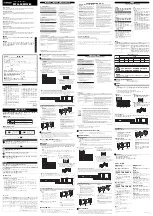
GE Grid Solutions
D25
User's Manual
GE Information
994-0081-3.00-21
73
Communications Ports,
Continued
Configuring
RS-485 2-Wire
In RS-485 two-wire mode, the RTS line internal to the D25 controls the transmitter
(the RTS signal is not propagated on to the serial cable, but is present inside the
hardware).
While RTS is active, the transceiver is in transmit mode. The “preamble” and
“postamble” timers determine the delay prior to transmission, and the amount of time
following transmission that the transmitter remains in control of the RS-485 line.
When the RTS line drops, the RS-485 port is placed back in receive mode until the
next time the D25 requests a transmission.
There is a third timer used to configure the amount of time the receiver must be idle
before the transmitter can be engaged. Although this timer is configurable, most
software applications do not have this timer in their configurations, and thus it is left
at its default value.
Control Signal
Digital Outputs
There are three digital outputs available through the Auxiliary Controls connector:
•
System fail output
•
Radio keying output
•
Auxiliary control output
The contacts of the relays provide electrical and mechanical isolation for all three
signals.
System Fail
Output
This output will be activated during the Power On Self Test (POST) that runs
whenever the D25 is reset via software or through cycling of power.
For the Electrical Specifications for Auxiliary Digital Outputs see page 154.
Note
: Contact wetting which must be supplied from a source external to the D25
Radio Keying
Output
Radio Keying Output emulates “push-to-talk” whenever the D25 is configured to use
radio communications equipment that requires this feature.
For the Electrical Specifications for Auxiliary Digital Outputs see page 154.
Note
: Contact wetting which must be supplied from a source external to the D2
Summary of Contents for D25
Page 170: ......
















































